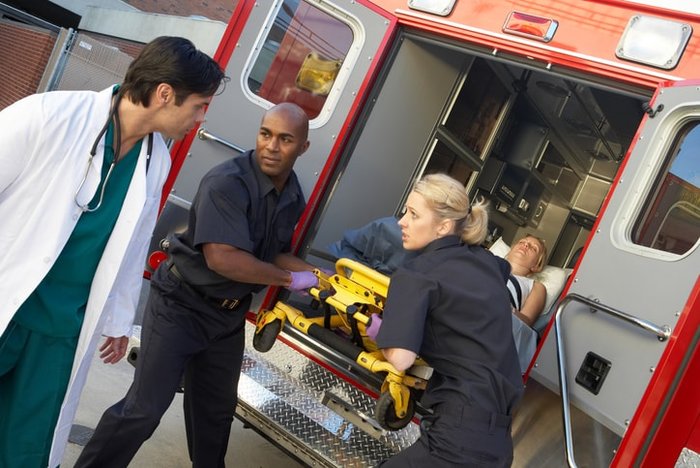
One of the most critical scenarios you will encounter as a paramedic is a patient in respiratory arrest. Whether the arrest is due to a drug overdose, an obstruction preventing a child from moving air, or a gunshot wound to the base of the skull that has knocked out the respiratory centers of the brain, treating respiratory arrest requires preparation, quick action, and the proper equipment. It requires a plan.
So let’s discuss the fundamentals of every paramedic's plan for respiratory arrest.
The Right Equipment
For a paramedic, it’s hard to treat patients when you don't have the right equipment on hand. Imagine working a code without your monitor, airway adjuncts, or portable suction machine. Impossible, right? Maybe not impossible, but surely not very effective. Our equipment allows us to medicate, oxygenate, defibrillate, and suction our patients, improving patient outcomes and saving lives.
But equipment is of no use if it is not maintained. Here are a few key components for equipment readiness:
Check it out—always inspect each piece of equipment at the start of each shift. Don't take the off-coming shift's word for it that “everything is there.” It's easy to misplace equipment, especially on a critical call. The frenetic activity surrounding a code, or the disarray of an extrication, can make keeping track of gear extremely challenging. Don't get caught empty-handed in an emergency simply because you assumed your equipment was in order.
Keep it clean—EMS is inherently pathogenic. Just the fact that we treat the sick means we encounter an array of germs. As a paramedic, not only are you responsible for protecting your patient from dangerous pathogens, you must also keep yourself and your coworkers safe. And cleaning your equipment after every call is a fundamental part of the plan.
Disinfect any piece of equipment that contacts bodily fluids. Whether it is blood, phlegm, vomit, or tissue, your equipment can become a vector if not thoroughly cleaned. This is especially true of your portable suction unit. The inherent nature of suctioning means it will be contaminated each time it is utilized, so be sure to NEVER reuse disposables, replace the container after each use, and wipe down the outer surfaces, especially knobs and handles.
The Right Training
As a medical professional, you never stop learning. You must commit yourself to continual education just to keep up with the changes in the field. Medicine is one of the most dynamic areas of science; ever changing, always evolving. Not only do current therapies improve, but new treatments are always on the horizon. It is your job to stay abreast of all the changes, and the best way to achieve this is through continuous learning.
Seminars, conferences, and specialized training are some of the many ways to improve current skills and pick up new ones. Reading journals, magazines, and internet resources also helps hone your skills and introduce you to the latest techniques and technologies. You must commit to learning to be an effective medical practitioner. EMS is a cutting-edge field, a focal point of technology.
The Right Resources
EMS agencies vary from city to city, region to region, even country to country. Some paramedics work in large, metropolitan areas, with plenty of personnel and mutual aid available. Other regions are more challenging. Vast, rural areas may have fewer people to take care of, but they also have fewer rescuers, many with long response times.
You must tailor your care to the nature of your response area. This is especially important when selecting equipment. Departments with fewer personnel and less backup may need to select smaller, more lightweight options for their equipment, since there are fewer hands available for hauling gear. For example, your portable suction unit.
A small, compact unit may be needed; one that can easily be stowed in a trauma or airway bag. Compactness is also important if you cover wildland areas, where you may walk or hike to your patient. When selecting equipment, form a committee, so that you receive input from various members of your department. Consensus is crucial to informed decisions, so be sure you select equipment that best serves your region.
A patient in respiratory arrest is one of the most critical scenarios to which you will respond. The most effective approach is to have a plan. And every paramedic’s plan for respiratory arrest should include the right equipment, the right training, and the right resources.














